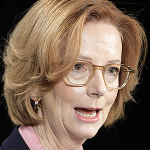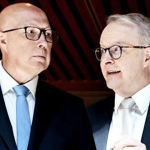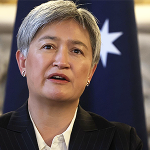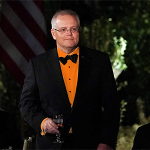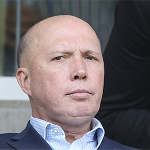Mark Rutte, the Nato secretary general, has a reputation for genial flexibility and an ability to evade trouble. During his record-breaking 14 years as prime minister of the Netherlands, he earned the nickname ‘Teflon Mark’.
He came to the job at a highly challenging time, a month before Donald Trump was elected to a second term as president. Rutte, more than anyone in Europe, knew the extent of Trump’s antipathy towards the alliance. At a tense meeting at Nato headquarters in Brussels in 2018, President Trump launched into a tirade in which he threatened that the United States would go its own way unless its allies increased military spending. Rutte, witnesses later said, had deftly changed the tone, arguing that spending had indeed risen, and that Trump deserved the credit. The president was mollified.
In a second Trump presidency, the threat to Nato’s stability and solidarity is even more acute. Both secretary of defence Pete Hegseth and Vice President J.D. Vance have spelled out publicly that the United States expects Europe to take responsibility for its own security.
European leaders seem, at least on the surface, to understand that, in Vance’s words, ‘in Washington, there is a new sheriff in town’. There is a mood of grim determination, with the Polish president undertaking to spend 4.7 per cent of GDP on defence, Keir Starmer pledging that the UK will move to 2.5 per cent, Sweden hoping to reach 3.5 per cent and Finland aiming for 3 per cent.
Will that be enough though to keep America committed to Nato? Of course Rutte, along with Nato heads of state and government, cannot be defeatist. Politicians know that sometimes they must, as Bing Crosby sang, ac-cent-tchu-ate the positive. But complacency is dangerous.
Rutte is hosting Nato foreign ministers in Brussels this week. Talking to reporters on Wednesday, he assured them that America remained ‘completely committed to Nato’. Seamlessly, however, he qualified this absolute commitment, saying it came ‘with a clear expectation, the expectation that on this side of the Atlantic and Canada, we will spend more’ on defence.
The following day, there was more backpedalling. Having stressed America’s rock-solid commitment, his reassurance now only extended to saying that ‘ if the Americans want to pivot more to Asia, obviously we will do that in a coordinated manner’.
The Americans will stay. Well, they will stay if the rest of Nato spends more money. Well, if they decide not to stay, the process will be orderly and managed. It is a worrying rhetorical retreat-under-fire in the space of less than 24 hours.
It is by no means certain that the United States will completely abandon its commitments in Europe. But too many people have taken Donald Trump ‘literally but not seriously’ and learned a painful lesson. Last month I admitted that I could not be certain that America would come to Poland’s aid in the event of Russian aggression. Even that element of doubt is shocking.
Anyone at Nato will remind Rutte of the dictum of the organisation’s first Supreme Allied Commander Europe, General Dwight Eisenhower: ‘Plans are nothing; planning is everything.’ The alliance should already be wargaming every possible eventuality, from the sound and fury signifying nothing which Rutte at first seemed to imply, all the way to a complete winding-down of the US military presence and Washington shifting focus almost entirely to the Indo-Pacific.
Nato is not dead. Even if the storms of the next four years are fierce, it can weather them. It should certainly be working on contingency plans to see the alliance through to 2028 in the first instance. It would be brave to bet against J.D. Vance or whoever carries the banner of Trumpism and MAGA at the next presidential election, but that is a lifetime away in political terms.
Too many people have taken Donald Trump ‘literally but not seriously’ and learned a painful lesson
If it is focused on bare survival, Nato will need to assess its current commitments, particularly those beyond its borders in Kosovo, Iraq and with the African Union, and decide what is sustainable if available assets and resources are significantly reduced.
The alliance’s current Strategic Concept, agreed at the Madrid summit in 2022, looks dauntingly ambitious three years later, with references to crisis management and prevention, partners in the Middle East, North Africa and the Sahel, and the ‘threat multiplier’ of climate change. The crisis is here, now, within the alliance, and its survival as a relevant and capable organisation depends on managing it.
Perhaps I worry too much. The secretary general may have the future of Nato well under control and is simply projecting a confident, relaxed demeanour of reassurance. But the alliance has failed to anticipate events before; it vastly overestimated what it could achieve with an aerial campaign in Libya in 2011; it failed to predict the sudden collapse of the Afghan security forces in 2021; and it neither foresaw nor deterred Russia’s invasion of Ukraine in 2022.
The Trump administration could not have been more explicit about its perception of Europe. Any doubt was washed away by the Signal group chat leak last month. Whatever transpires over the next four years, Nato’s leadership must not cheerily assume the best. We will have no excuse for being taken by surprise.


